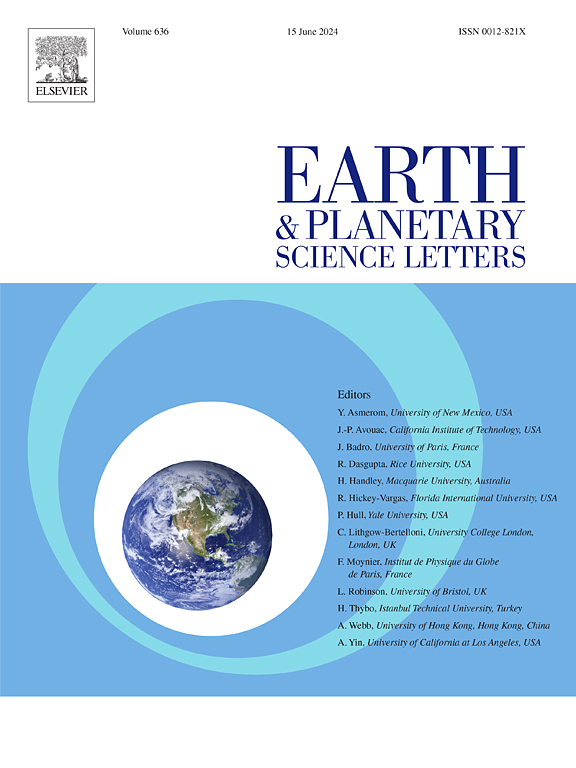Coeval formation of continental crust and cratonic mantle facilitated by surface material recycling in the Paleoarchean: Constraints from molybdenum isotopes
IF 4.8
1区 地球科学
Q1 GEOCHEMISTRY & GEOPHYSICS
引用次数: 0
Abstract
The formation of cratons was a fundamental process on Earth during the Archean. Cratons are characterized by a stable lithosphere consisting of felsic continental crust overlying a lithospheric mantle. The spatial and temporal relationship of these two distinct reservoirs can be reconstructed from mafic dyke swarms that are sourced from the cratonic mantle and intruded the Archean cratons over time. Trace element abundances of four dyke swarms that intruded the Singhbhum Craton between 2.8 Ga and 1.8 Ga combined with stable Mo and radiogenic Hf and Nd isotopes indicate that the crustal enrichment signature in the parental magma of the dykes was due to earlier enrichment of their respective mantle sources. The covariation of δ98/95Mo with mobile/immobile element ratio indicate that hydrous melts originating from recycled surface-derived materials led to metasomatism in the mantle source region of the mafic dykes. A redox-dependent multicomponent element (Mo, Ce) and isotope (δ98/95Mo, εHf, εNd) mixing model affirms that the metasomatism of the Singhbhum cratonic mantle was facilitated by reduced low-degree melts derived from recycled sediments and hydrated mafic crust. The mixing model further suggests that the cratonic lithosphere of the Singhbhum Craton was metasomatized in the Paleoarchean around 3.44 Ga, which is synchronous with the formation of Singhbhum granitoids. This is one of the oldest geochemical indications of mantle metasomatism on Earth. The radiogenic isotopes and δ98/95Mo reveal that even in the Paleoarchean, recycling of surface-derived reduced material at least locally by horizontal tectonics was active on Earth and this process played a critical role in the formation of stable cratons.
求助全文
约1分钟内获得全文
求助全文
来源期刊

Earth and Planetary Science Letters
地学-地球化学与地球物理
CiteScore
10.30
自引率
5.70%
发文量
475
审稿时长
2.8 months
期刊介绍:
Earth and Planetary Science Letters (EPSL) is a leading journal for researchers across the entire Earth and planetary sciences community. It publishes concise, exciting, high-impact articles ("Letters") of broad interest. Its focus is on physical and chemical processes, the evolution and general properties of the Earth and planets - from their deep interiors to their atmospheres. EPSL also includes a Frontiers section, featuring invited high-profile synthesis articles by leading experts on timely topics to bring cutting-edge research to the wider community.
 求助内容:
求助内容: 应助结果提醒方式:
应助结果提醒方式:


